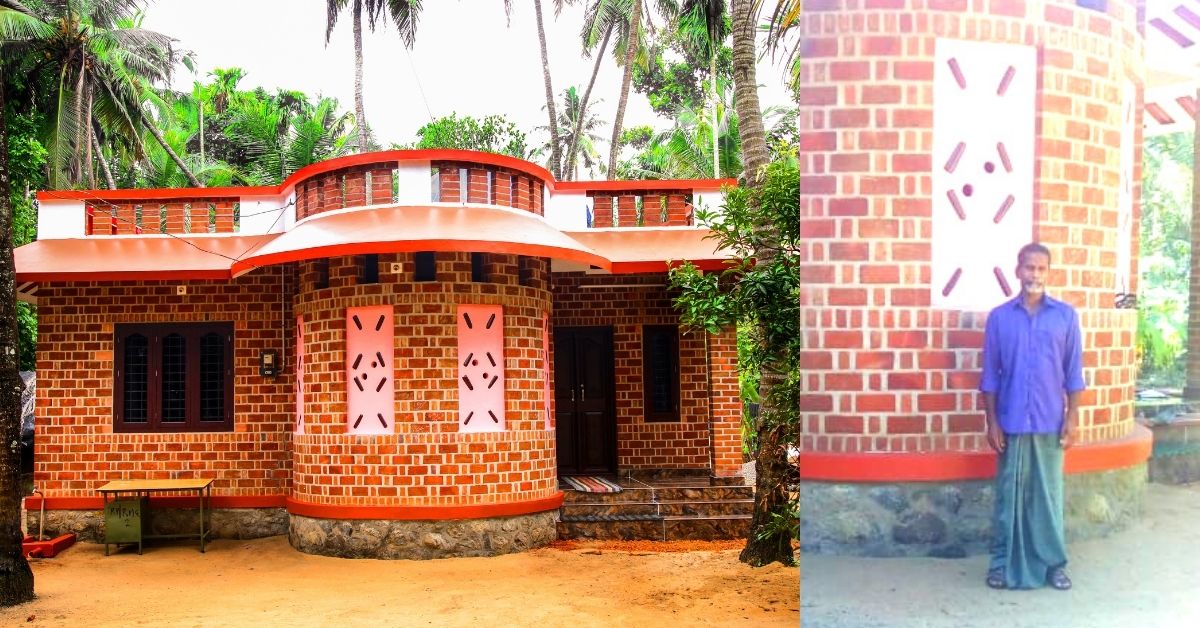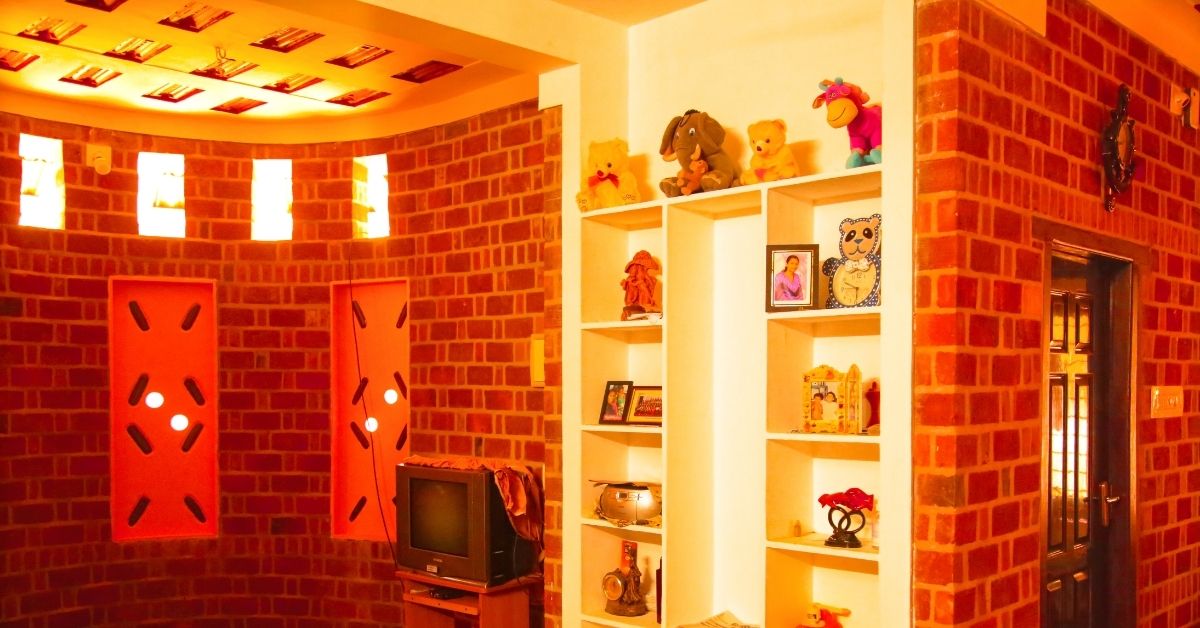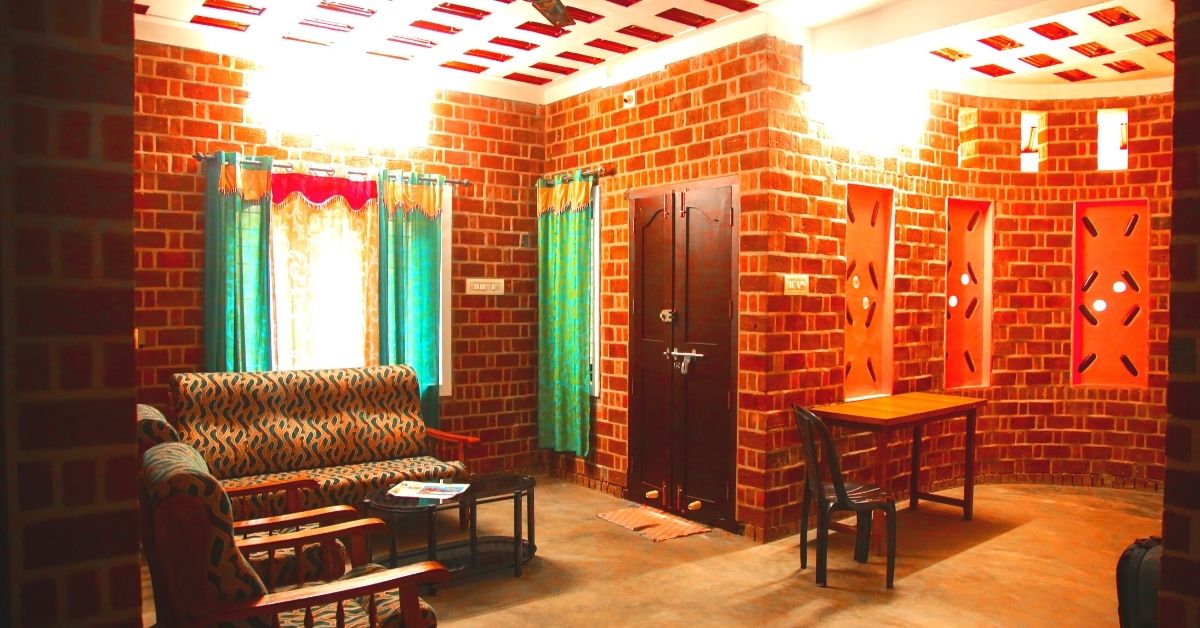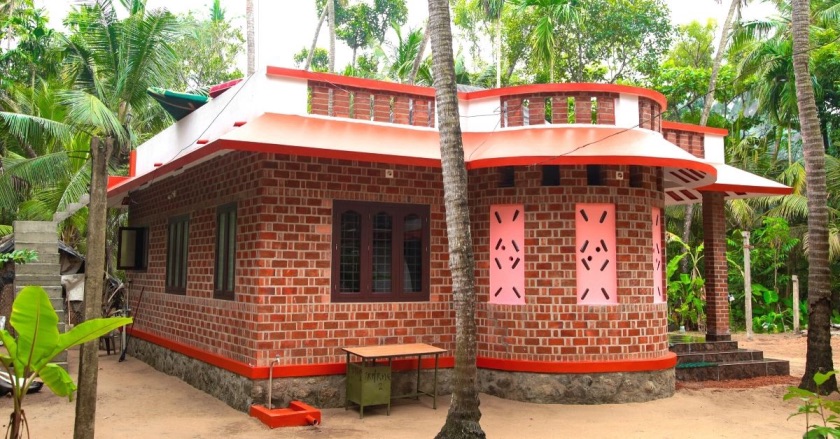This Fisherman’s Eco-Friendly Home Doesn’t Need Traditional Cooling Methods
Fisherman and painter, Ashokan Padapelly, from Kerala narrates how he got his dream home, a sprawling 850 sq ft, 2BHK residence, using cost-effective and eco-friendly features

Owning a brick and mortar house was always a distant dream for 63-year-old Ashokan Padapelly. However, depending on the mercy of the ocean for a better catch and struggling to make ends meet did not provide an opportunity for this Thrissur-based fisherman and painter to own his own home.
On a good day, Ashokan earned anywhere between Rs 2,000 and Rs 4,000. But on many occasions, he returned empty-handed from the coasts of Kerala. In 2016, on one of his strolls of the neighbourhood, he was captivated by the view of a bright red coloured brick house he spotted.
“It was a newly constructed house in the neighbourhood, which was similar to the type of structure I had in mind for my own home,” the Edamuttam village native says and adds that was what pushed him to building his own permanent residence. “Without further delays, I decided to go try all the means I could to own the house of my dreams,” he says.
And within four years, the fisherman built a house with a Rs 10 lakh-budget, while also incorporating eco-friendly elements in its construction. He tells The Better India how he did it.
The house that the fisherman built

Ashokan started making inquiries for experts to help him build an affordable house. Simultaneously, he also began gathering funds for its construction. In his quest to build a home, he learned about Costford (Centre of Science and Technology For Rural Development) architects, a non-profit organisation, who helped build cost-effective residences for people from lower economic strata of society. “They presented me with an estimate of Rs 10 lakhs to build a 2BHK (Bedroom, Hall, Kitchen) house spread across 850 sq ft,” he says.
Finalising a plan and the cost estimates for construction, Ashokan approached the fisheries department, who sanctioned a loan of Rs 2 lakh. He was able to scrounge up another couple of lakhs from his niece and other relatives, friends and his life’s savings.
Santhilal, an architect with Costford, says that Ashokan could not afford to build his own home. Speaking of the delays in construction due to shortage of funds, he says, “It took four years to build his house that could have been constructed within a year.”
The house, Ahokan says, was constructed using the techniques of the famous British-Indian architect, William Lorry Baker, a proponent of cost-saving, energy-efficient designs. The techniques involved carving a cavity within the bricks between alternate layers in the walls of the house.

Santhilal explains, “Semi-mechanised bricks were used for the entire construction of the house. The walls have a hollow space between alternate layers, which is known as the rat trap method. They’re filled with air and act as an insulator against hot and cold weather conditions. As a result, the house remains 6 to 8 degrees Celsius cooler than the temperatures outside in the summers, while in the winters, the warm temperature inside the house is retained due to the insulation provided by this method.”
The architect adds that with the bricks arranged in this fashion it reduces the requirement for the same by 25 per cent. “The roof of the house also has weatherproof features. Instead of creating an entire roof with dead concrete, 2.5 inches of concrete slab was poured over Mangalore tiles that were 1.5 inches thick. The tiles made from mud act as an insulating agent, keeping the house comparatively cooler during peak summers,” Santhilal tells The Better India.

He adds that with these weather-proof and insulation tactics, Ashokan’s house will not require an air-conditioner during summers. “Just a fan will suffice, if needed,” he says.
To reduce costs further, no paint was applied to the walls. “The bricks are allowed to breathe freely, without any layer of paint. The floor is made by leveling and plastering concrete to smoothen it. Such arrangements drastically reduced the construction cost of the house,” Santhilal says.
Using these techniques, Ashokan could build a house complete with two bedrooms, a living room, a library space, a dining space and kitchen all within his budget of Rs 10 lakh. “The house is still undergoing some finishing touches on the roof and its exteriors. Ashokan should be able to move inside his house within the next few weeks,” Santhilal says.
Ashokan says that he is overwhelmed to finally have a strong roof over his head. “I am happy that I could build the house of my dreams. I am eagerly waiting to start living in it, and feel safe and secure with my sense of ownership,” he proudly adds.
(Edited by Yoshita Rao)
If you found our stories insightful, informative, or even just enjoyable, we invite you to consider making a voluntary payment to support the work we do at The Better India. Your contribution helps us continue producing quality content that educates, inspires, and drives positive change.
Choose one of the payment options below for your contribution-
By paying for the stories you value, you directly contribute to sustaining our efforts focused on making a difference in the world. Together, let’s ensure that impactful stories continue to be told and shared, enriching lives and communities alike.
Thank you for your support. Here are some frequently asked questions you might find helpful to know why you are contributing?


This story made me
-
97
-
121
-
89
-
167













